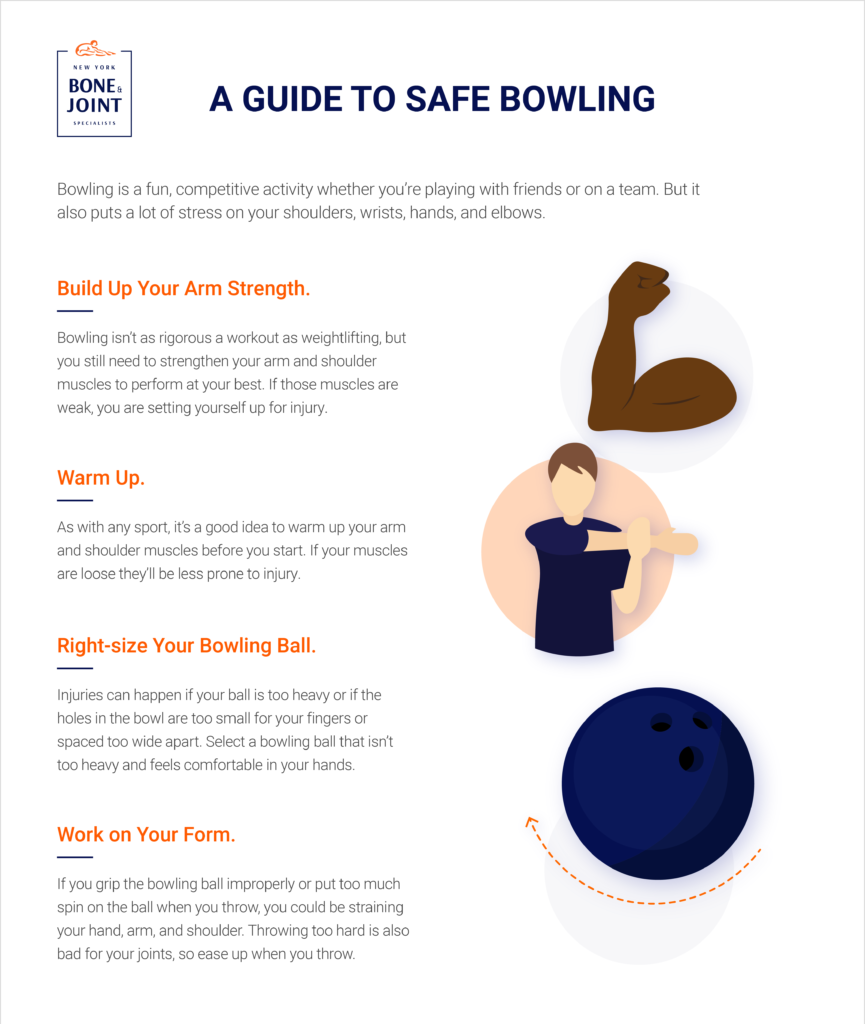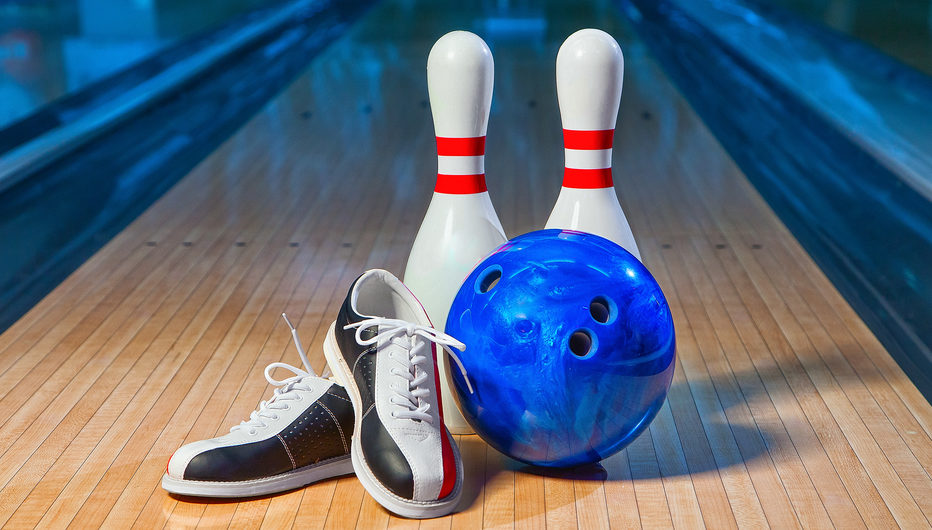Bowling is a fun, competitive activity whether you’re playing with friends or on a team. But it also puts a lot of stress on your shoulders, wrists, hands, and elbows.
There’s no doubt that bowling is a fun sport popular with people of all ages and backgrounds. Whether you’re playing with friends on the weekend or competing in a tournament, bowling is a great way to socialize while building up some arm strength. And since it’s played indoors, bowling can be enjoyed any time of year no matter the weather.
Because bowling is so much fun, it’s easy to forget that it’s still a strenuous activity — one that can strain your shoulder, wrist, and elbow joints. Bowling can lead to painful orthopedic injuries to your tendons if you overdo it. Watch out for these common bowling-related injuries and take steps to avoid them.
5 Common Bowling Injuries
Bowling-related injuries most often occur due to repetitive strain on the tendons from rolling a heavy bowling ball. Tendons are the strong bands of tissue connecting muscle to bone that allow the joint to move. When you stress the tendons repeatedly, you’ll feel pain and stiffness in the joints in your arm and shoulder and you may even experience some of the following injuries:
Bowler’s Elbow. The most common bowling-related injury, bowler’s elbow, or epicondylitis, develops due to the repetitive wrist movements when swinging and releasing the ball. Such actions strain and inflame the elbow and forearm tendons, causing pain and numbness.
Bowler’s Thumb. If the thumb hole in your bowling ball is too tight, you may pinch the ulnar nerve in your thumb. Putting significant spin on the bowl also leads to bowler’s thumb.
Shoulder Tendonitis. The quick swinging motion when you throw the heavy bowling ball can strain the shoulder tendons. Throwing the ball with excessive force can also stress the shoulder tendons.
Carpal Tunnel Syndrome. Carpal tunnel syndrome isn’t just reserved for office workers — it can affect bowlers, too. Repeated throws can compress the median nerve in the wrist area, leading to numbness and tingling in the fingers (except the little finger) as well as pain and burning in the hand and wrist. The pain may also travel up to the elbow and the forearm.
Trigger Finger. Constantly gripping and throwing the bowling bowl can irritate the sheath covering the tendon of the finger. Pain when gripping the bowling ball, or a finger that is locked in place or makes a popping sound when bent all indicate trigger finger.
Treating and Preventing Bowling Injuries
If you experience pain in your shoulder, wrist, or elbow, take a break from the bowling alley for a few days. Rest, ice, and over-the-counter pain medications can all alleviate the pain and increase mobility. If the discomfort fails to subside, physical therapy can help relieve aching joints and stiffness.
Of course, there’s always a better option than treatment when it comes to injuries: prevention. If you want to avoid an injury altogether, take these preventative steps:

Build Up Your Arm Strength. Bowling isn’t as rigorous a workout as weightlifting, but you still need to strengthen your arm and shoulder muscles to perform at your best. If those muscles are weak, you are setting yourself up for injury.
Warm Up. As with any sport, it’s a good idea to warm up your arm and shoulder muscles before you start. If your muscles are loose they’ll be less prone to injury.
Right-size Your Bowling Ball. Injuries can happen if your ball is too heavy or if the holes in the bowl are too small for your fingers or spaced too wide apart. Select a bowling ball that isn’t too heavy and feels comfortable in your hands.
Work on Your Form. If you grip the bowling ball improperly or put too much spin on the ball when you throw, you could be straining your hand, arm, and shoulder. Throwing too hard is also bad for your joints, so ease up when you throw. Work with a professional bowler to perfect your technique so you can enjoy the sport pain-free.
Bowl a Strike Today!
If you’ve experienced injuries from bowling, it’s important that you recover fully before you return to the lanes. If simple at-home treatments like ice and rest don’t work, it’s important that you see a doctor to ensure you can heal properly.
At New York Bone & Joints Specialists, we know playing your favorite sport — whether it’s bowling, basketball, soccer, or anything else — is an important part of your overall well-being. No matter what activity you love and have been forced to put on hold, we will work with you to minimize pain and get you back on the field, gym, or bowling alley. Contact us today for a consultation.




